By using a PPG system (photoplethysmograph), data from the heart beat can easily be obtained. Although the device is relatively simple, the design opportunities that are created are fast and as complex as the designer’s wishes. In the module “sense your heart”, master students created several very interesting ideas and prototypes. The goal of this module was to get a good understanding of the workings of the human heart and how this working can be monitored. Secondly a learning objective was to implement these measurements in a concept using a self-built Photoplethysmography sensor and corresponding software. This technology can be used for measuring the heart rate, which in our case was used to determine the heart-rate variability which can be an indicator for relaxation or arousal.
Tag: student report
Doormat is not just a doormat
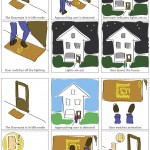
Don Willems designed a doormat. The doormat is not just for wiping your feet, but also for lowering the electricity consumption. How does it do it? The doormat is at the same time a LED display that allows people to easily turn off devices when leaving the house as well as improving their energy consumption behavior by leaning from tailored coaching when coming in. Read the full report for more information [PDF, 3M]
From his report, “The Doormate is for wiping your feet and supporting lowering of electricity consumption. It does the latter by communicating information through an integrated LED display. It allows people to easily turn of devices when leaving the house as well as improving their energy consumption behavior by learning from tailored coaching when coming in. One could say the Doormate is addressing both the ‘consumer’ – making sure no money is wasted when not at home and the ‘citizen’ – contributing by environmental friendly behaviour – in people. Continue reading Doormat is not just a doormat
Tangible Instant messaging
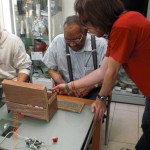
Sometimes the first year students surperize you with what they can do in their very first year. Pim Vellenga, Hessel Sieswerda and Niels Timessen challenged themselves with “one huge problem: how do you get the interactive onscreen user interface out of instant messaging experience.” They designed a tea box that is integrated with messaging abilities for the elderly to communicate with their grandchildren. Read the report [PDF, 2M] for more.
Centralized versus Decentralized: A Study on Tangible Control over Devices in the Living Room
By Matthijs Kwak
Interesting work done by one of the master students. [Project Report, PDF, 700K]
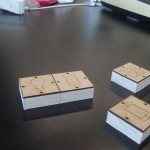
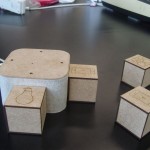
Abstract: Technology is moving to the background and interoperability between devices increases. The handles for users to explore, make and break connections between devices seem to disappear inoverly complex menu structures displayed on small screens. Two prototypes have been developed that introduce a tangible approach towards exploring, making and breaking connections between devices in the living room. One provides a centralized approach (SCD1), the other a decentralized approach (SCD2). Industrial Design students and graduates(N=12) have performed tasks and were asked to explain and grade one out of three methods: SCD1 (image 1), SCD2 (image 2) and bluetooth pairing.Findings suggest that users are better able to project their mental model of how the system works on SCD2 and that atangible solution is not necessarily a better one.
Farm Ville: Contextual Information Exchange
B22 Project by Jaap Norbruis. [PDF Report, 1.5M]
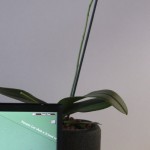
“Within this project I explored how context is experienced and in what ways it can be captured and communicated. The design goal of this project is to design a system that communicates contextual information seamless across realities, the context of a remote user should be communicated to a receiving person is such a way that he or she is able to experience it.”
Share your context
Hugo Christiaans, one of my students, has done an excellent project, namely Share Your Context, about contextual information exchange.
[PDF, 2M] Share your context
Summary of the report:
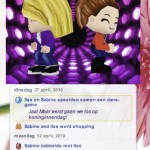
Non face‐to‐face communication of social and emotional experiences between people happens nowadays through phone or other media like email, IM (Instant Message), webcam and other virtual communities such as Second Life. Share experiences, express creativity and maintain easily contacts have made these virtual worlds very popular for millions of Internet users. To support the communication in these worlds emoticons are often used. This form of context is a combination of different states (physical, information, social and emotional), which help the receivers too understand the received information right.
Light and the perception of cleanliness in the metro environment
M12 Research Project by Niels Molenaar. Report: [PDF, 400K]
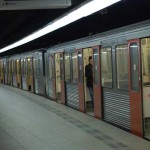
In public spaces to improve the public perception of cleanliness different lighting conditions can be utilized to dim or to light the littered areas. One would suggest to dim the light for the littered area, or the other way around, to improve the perceived cleanliness. It is however not clear how the lighting condition in the littered area would influence the perceived cleanliness. In this paper we report the result from an experiment in which a metro environment is set up to observe how people react to darkened and lightened litter. The result is somewhat supersizing. People perceive an environment as cleaner when attention is drawn to litter by focusing light on it. The causes of this observation are discussed.
FULLTEXT: PDF
We Touch Pillow: The pillow that communicates family presence through warmth without an obliged effort for the user
by Sophie van der Weerd, [PDF | 2M]
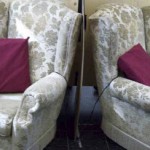
In her B22 project report, Sophie writes: “…I will offer the ‘WeTouch Pillow’; the pillow that communicates your families’ presence in a subtle way without an obliged effort. If one uses his pillow, the pillow of the other becomes warmer and vice versa. I will focus upon the communication tools market. The market will have a need for my product, since it communicates family presence without an obligation and current communication tools require an obligation and effort, which people do not like when communicating with their family like having to call, as to my user research. I want to express to the market the importance of family presence and contact, but that there is no obliged effort needed. The internet will be a good medium to use to contact the target group of relatives living apart, since the younger generations uses it a lot. And I try to reach people who live apart from each other, so an internet service which sends one pillow to each of the relatives is a good way to sell the WeTouch Pillow. Also because an internet connection is needed for the pillows to connect…”
Movow: Contextual Information Exchange
by Meerthe Heuvelings. [PDF, 2.3M]
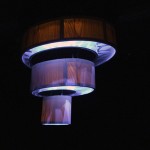
“In the ‘Contextual Information Exchange’ project, the focus was on communicating the context of one user to another user. In this project I focused on creating a feeling of connectedness over distance. To create this feeling of connectedness, I did research to the missing-links between face-to-face and distant communication and concluded that virtual shadows of real physical objects or people can create a feeling of physical presence on ‘the other side’.
In this project we worked in three iterations, the last two iterations were done individually. In the second iteration I developed a concept in which the shadows of stones can form a new medium of communication over distance. The stones on one side are transfered into shadows on the other side and vice versa. This will create a decorative piece of stones and shadows, that is made with use of two persons that live on a distance from each other.
The final concept is the ‘Movow’, which stands for ‘Moving Shadow’. In this concept the amount of people and the speed with which these people move are detected in one room, and transfered into shadows of the ‘Movow’ light object in another room. The ‘Movow’ is able to generate shadows according to the amount of people and movement. When there are not that much people in the other room, only the lower ring of the prototype will be lit. When the amount of people increases, the light will ‘grow’ to the ceiling. The speed with which the lights will be circulate in the rings, depends on the movement of the people in the other room. For this concept a prototype is build that represents the light and shadow capabilities of the concept.”
Magnetic clock: Contextual Information Exchange
B22 Project by Yi Xue. [PDF Report, 3M]
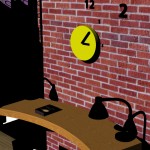
“The number around the clock will change according to the social status of other’s. The size of the number and the distance to the clock are proportional. Larger the size, longer the distance stands for socialing and vice versa. The color in the middle will show dynamic situation of social environment.”